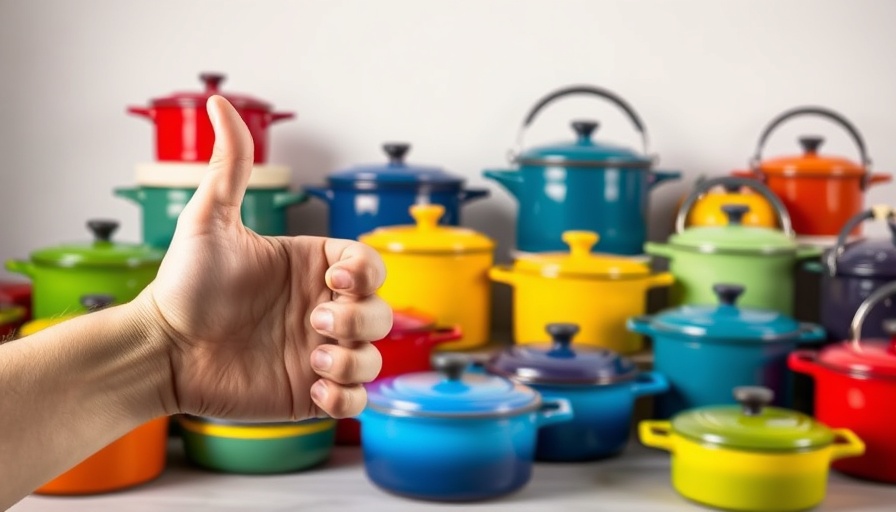
Reassessing the Timelessness of Le Creuset Cookware
The French cookware brand Le Creuset has long embodied the notion of durability and quality. With a history dating back to 1925, it promises customers that investing in their signature Dutch ovens is akin to investing in a family heirloom.
Yet, recent shifts in consumer behavior have raised questions about the brand's standing. While once viewed as a reliable kitchen staple, Le Creuset's reputation has taken a hit. What once signified quality is now criticized as a symbol of a superficial lifestyle, appealing primarily for its appearance and status rather than practicality.
Why the Shift in Perception?
The rise of social media has significantly influenced how brands are perceived. As younger generations flock to platforms like TikTok, Le Creuset has found itself at the center of the 'cottagecore' trend. This appreciation for rustic aesthetics, however, masks a potential pitfall — the obsession with image can overshadow the actual benefits of the product.
As per a recent article from Salon, the emergence of hashtags like #LeCreuSlay exemplifies how the cookware transforms into an accessory for Gen Z influencers and lifestyle enthusiasts. While there are genuine culinary enthusiasts who cherish their Le Creuset pots, others appear more interested in the visual appeal and the clout that comes with owning these pieces.
Balancing Functionality and Aesthetic
In contrast to its new image as a status symbol, many longtime users still cherish the functionality of Le Creuset products. Those who have invested in the brand often attest to its quality, noting that a single Dutch oven can last decades with proper care. This durability sets Le Creuset apart from many other cookware brands that tend to wear out or chip under pressure.
With endorsements from famous chefs and frequent appearances in popular culture, the pots have maintained a spot in culinary conversations. However, the desire to display them prominently overshadows their intended purpose. This brings to light a growing misconception among newer users who may prioritize aesthetics over usability, potentially leading to disappointment when the pots don’t deliver on their cooking promises.
The Emotional Connection to Le Creuset
Many of us are drawn to cooking not just for sustenance but for the memories and traditions we create around it. The Dutch oven, in its cheerful hues, often symbolizes a person's entry into 'real adulthood' — a notion that resonates with millennials and Gen Z alike. But how do we balance this nostalgia with the modern pressures of consumerism and visual validation?
Le Creuset, for many, evokes cherished memories linked to family gatherings and the comfort of home-cooked meals. However, with the rapid commercialization of its image, are we losing sight of these personal connections? As actors like Nicola Coughlan’s character emphasize in the recent Channel 4 series Big Mood, waiting for a signature cookware piece to arrive can sometimes symbolize a deeper wish to gain control over one's life.
Takeaway: Navigating Trends and Traditions
The allure of Le Creuset stems from both its historic charm and its evolving identity in contemporary culture. While it is essential to be cognizant of the trend-driven nature of some consumers, it is equally vital to appreciate those who invest in it for its quality and heritage.
Resilience, nostalgia, and pride in craftsmanship should guide our perspectives. Like any beloved kitchen piece, it’s how you use it that matters, not merely how it looks on your countertop.
So, whether you're a culinary enthusiast or an influencer seeking the perfect shot, remember that at its core, Le Creuset cookware is about cooking, sharing meals, and creating lasting memories in the kitchen.
 Add Row
Add Row  Add
Add 




Write A Comment